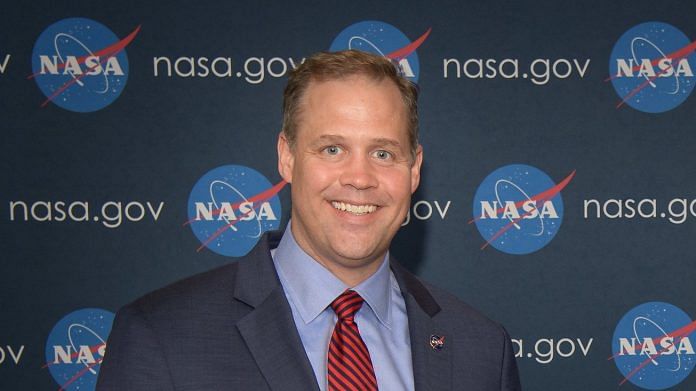Bengaluru: In the last couple of days, a number of reports have come up about NASA chief Jim Bridenstine’s declaration that Pluto is still a planet. In an event earlier this week, Bridenstine mentioned that the celestial body should be reclassified as a planet because that’s how he had studied about it in school.
Pluto was officially declassified as a dwarf planet in 2006.
High ranking space agency officials, however, do not hold the power to change the scientific convention of what can or cannot be a planet. Despite many fighting this unusually long battle of reinstating Pluto’s ‘planet-hood’, the celestial body is still considered a dwarf planet.
Planetary definitions are decided by the International Astronomical Union (IAU), a global consortium of astronomers, which has laid down three guidelines to officially declare any celestial body a planet. There are 13,697 members in the IAU representing 82 countries who vote on major decisions including names of astronomical bodies.
“No space agency or individual scientist can overthrow or overrule IAU decisions or say on this matter,” Aswin Sekhar, full voting member of IAU and an Elected Fellow of Royal Astronomical Society, London, told ThePrint.
“IAU is the ultimate authority when it comes to determining names, terminology and status for celestial bodies,” he added.
Also read: NASA telescope finds exoplanet trio that can unravel mysteries of planet formation
History of Pluto
Pluto was discovered in 1930 by astronomer Clyde Tombaugh, while carrying forward scientist Percival Lowell’s search for the mythical Planet X — a large celestial body that was supposed to be disturbing the orbit of Uranus.
It was discovered after a year of research at the Lowell Observatory. Consecutive photographs of large swathes of the sky over a period of several days and comparing them had led to Pluto’s discovery.
The name ‘Pluto’ was unanimously chosen by the observatory, with the first two letters being initials of Percival Lowell. It was speculated that even Walt Disney had named Mickey Mouse’s dog after the planet.
Pluto went on to enjoy its planetary status for several decades. In 1992, however, scientists found celestial bodies that were very similar to Pluto and which orbited in the same area.
It was then understood that Pluto was one of the many objects in a group of celestial bodies called Kuiper belt. This icy region in the solar system stretches for billions of kilometres beyond the orbit of Neptune.
This discovery led astronomers to question Pluto’s planetary status.
More celestial bodies of various sizes and masses were subsequently discovered outside our solar system, prompting a clear definition by scientists of what exactly is a planet. Consequently, IAU came up with a new definition for a planet in 2006.
The new guidelines state that for any body to be named a planet it must satisfy three conditions: it must orbit the sun, be massive enough for its own gravity to keep its shape round and should have “cleared its neighborhood”.
Pluto’s demotion was decided because it did not fulfill the third category.
To clear its neighbourhood, a celestial body must ensure that it is the most gravitationally powerful object in its orbit, and no other bodies of comparable size or mass can be in the area.
Unfortunately for Pluto, bodies like Eris — smaller than it in size but more massive, and discovered by astronomer Mike Brown — orbit nearby. Pluto takes 248 years to go around the sun and it was reassigned a dwarf planet before it could even finish one orbit since its discovery.
Also read: New 3D map shows Milky Way isn’t shaped like pancake but a warped wave
The case for Pluto
There are a lot of people currently campaigning to bring back its planetary status. Some do so for nostalgic reasons, such as NASA administrator Bridenstine.
However, there is also a lot of scientific dissidence for the ‘unsatisfactory definition’ of what is a planet.
The “clearing neighbourhood” definition is considered vague. There is no clear definition of how far a neighbourhood extends beyond a celestial body’s orbit. And there are systems such as the Pluto-Charon, where the moon is so big that Pluto and Charon orbit a common point lying between them.
One of the most prominent evangelists for redefinition is Alan Stern, the principal investigator of the New Horizons mission that flew by Pluto. He had criticised the inadequacy of planetary definitions.
Stern says that Earth would not have been considered a planet under the official definition if it was present in the Kuiper belt area — since this region is too far and wide for something as small as earth to clear its neighbourhood.
He also says that bodies should be easily identifiable. Stern likens this to watching any science fiction movie in which a celestial body is easily distinguishable as a star or a planet.
He proposes a new definition for a planet — anything that can hold itself by its gravity in a round shape and hasn’t undergone nuclear fusion. But this definition comes with its own troubles. There are numerous transitionary bodies that are not fully stars and aren’t entirely planets either. Also, all moons will then be reclassified as planets.
For the moment, though, there are no plans to reinstate Pluto’s planetary status.
“It seems like Bridenstine has made more of an informal remark to go with the spirit of general public who likes to remember Pluto as a full-fledged planet because of our formal school textbooks saying so for a long time,” said Sekhar.
This is an updated version of the report
Also read: Fresh discoveries—18 earth-sized exoplanets & a 50 million-year-old fossil of 259 fish



